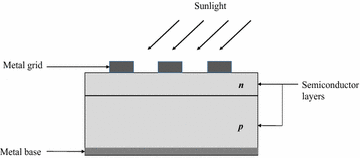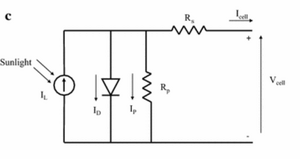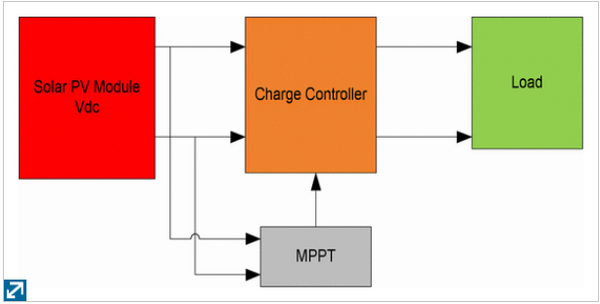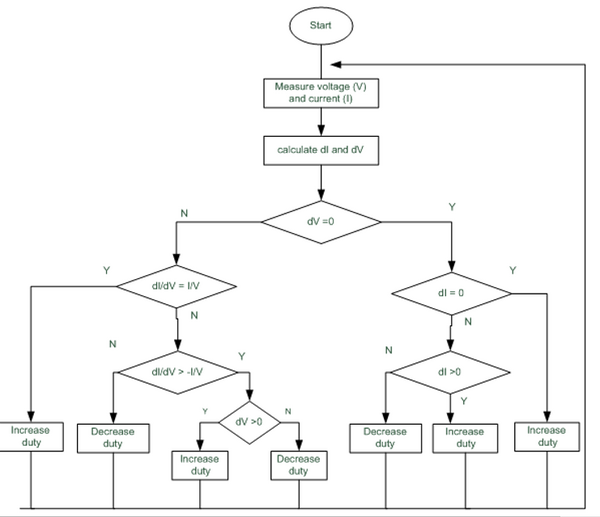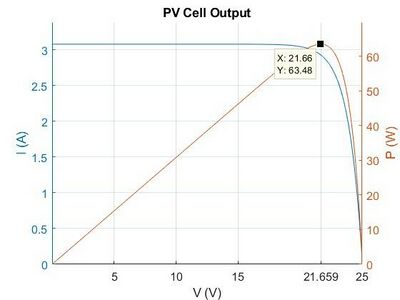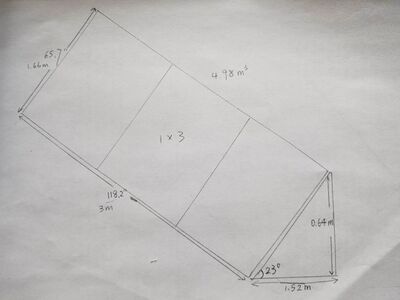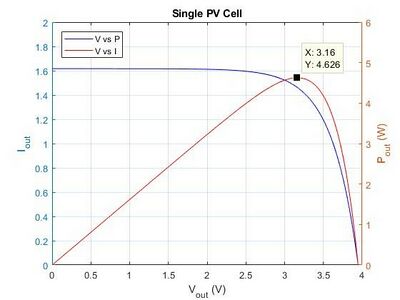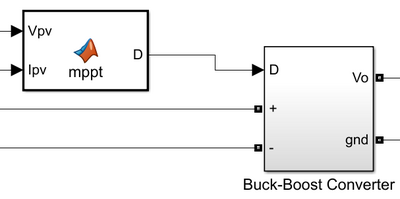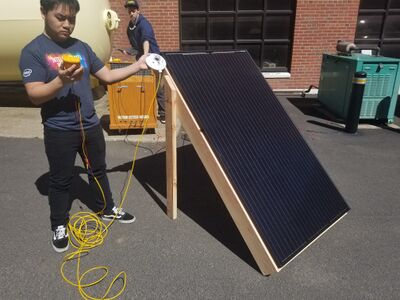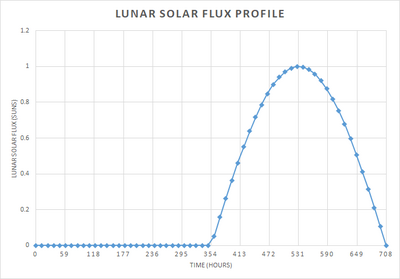Solar panel array model for UI FESS development
The overall objective of this project is to develop a model of a PV (Photovoltaic) panel array using MATLAB and to then verify that model using hardware. The PV panel array will be used to supply power to a FESS (Flywheel Energy Storage System) that NASA is developing for energy storage on the lunar surface. The solar panel array model is needed for the University of Idaho’s low speed FESS development.
| Solar Panel Array Model for UI FESS Development | |
| Team Name | Solar FESS |
| Clients | Brian Peterson |
| Sponsors | NASA ISGIO and ECE department |
| Tech Advisor | Dr. Herb Hess |
| Instructor | Dr. Feng Li |
| Duration | Fall 2017 - Spring 2018 |
| Team member | Haotian Wang, Mingyang Xu, Sean Daniel |
Problem Definition[edit | edit source]
Background[edit | edit source]
• NASA is developing FESS for space applications which include Mars colonization; a first step towards Mars colonization is lunar colonization.
• Lunar colonization requires energy storage to bridge the gap between energy generation and energy demand (load).
• The University of Idaho has developed a low speed FESS and is developing a high speed FESS.
• A solar panel array model is needed for use in UI HS FESS development
Design Goal[edit | edit source]
The equipment needs to be able to handle the harsh environment on the lunar surface where it will experience temperatures. The PV array model must take into consideration the environmental conditions such as irradiance and temperature using the characteristics of a silicon wafer. Things like power output and voltage fluctuation needs to be taken into consideration as the FESS will regulate the voltage on the panel’s output. The model must be as simple as possible without sacrificing accuracy as the PV panel array will be a piece of a larger electro-mechanical system.
Project Learning[edit | edit source]
How a photovoltaic cell works[edit | edit source]
A photovoltaic cell is usually a semiconductor device that converts sunlight into electricity by the means of photovoltaic effect. When light falls on a solar cell, the incoming photons can be absorbed, reflected, or passed through it. For a photon to be absorbed by the solar cell, the energy of the photon must be greater than the band gap energy of the cell. The photon is then absorbed to generate pairs of mobile charge carriers (for example, electron and hole) which are then separated by the structure of the device (such as a p–n junction). This produces a potential difference and thus produces electrical current. The photovoltaic effect is shown by various materials. In most of the cases, semiconductor materials (like silicon) in the form of p–n junction are commercially used to produce solar cells .
- A semiconductor p–n junction can be made to operate as a solar cell. Figure 1 shows the basic structure of a PV cell. When light is incident on the cell, the photons of light generate free electron–hole pairs which are then attracted toward the junction.
Different parameter models of solar cell[edit | edit source]
| Parameters | Symbol(Unit) |
| Maximum power rating | Pmax(Wp) |
| Rated current | Impp(A) |
| Rated voltage | Vmpp(V)
|
| Short-circuit current | Isc(A) |
| Open-circuit voltage | Voc(V)
|
| Normal operating cell temperature | NOCT(°C) |
| Temperature coefficient: short-circuit current | (A/°C) |
| Temperature coefficient: open-circuit voltage | V (°C) |
Design Specifications[edit | edit source]
The model should take inputs of temperature and irradiance that it would see on the lunar surface and give an output voltage and current. Temperatures ranging from -243°F (-153°C) to 253°F (123°C) Solar irradiance of about 100 W/m2 DC bus on the FESS typically operates at 24 V
Ideal cell model[edit | edit source]
In ideal condition, the solar cell is electrically equivalent to a current source in parallel with a diode as shown in Fig. 3a. The light-generated current, also known as photocurrent, is represented as IL, the diode current as ID, and the net current and terminal voltage of solar cell as Icell and Vcell , respectively.
model must be easily adaptable to different size PV panel arrays and different environmental conditions
Includes PV panel array and charge controller
Must be capable with the FESS model
model will be verified using hardware
MPPT Charge Controller[edit | edit source]
Max Power Point Tracking is an electronic DC-DC converter that optimizes the power supplied by a solar panel
Ensures the panel’s output is at maximum power
CONTROL ALGORITHM[edit | edit source]
Incremental Conductance(IC) Algorithm of the proposed MPPT technique
Measures voltage and current then adjusts duty cycle to remain at peak power
Project Design[edit | edit source]
Project verification[edit | edit source]
Hardware needed for verification
Prices stated out in budget handout
Solar panel to verify the PV Panel Array model
Maximum Power Point Tracking MPPT Charge Controller to verify charge controller and entire system under load
Solar Panel[edit | edit source]
The Series and Parallel resistance values Rs and Rp are not given by manufacturer These parameters can be derived using the experimental maximum power Pmex Start by incrementing Rs starting from zero until the calculated maximum power Pmax = Pmex then calculate Rp using Rs
Maximum output power is necessary in determining Rs and Rp from the PV Cell equivalent circuit
Pmax can be determined by measuring the output voltage and current using various resistive loads
The maximum power can be determined by plotting Pout vs Vout
PV Model Cell[edit | edit source]
model must be easily adaptable to different size PV panel arrays and different environmental conditions Includes PV panel array and charge controller
Must be capable with the FESS model
model will be verified using hardware
SOLAR PANEL INSTALLATION[edit | edit source]
3 piece of solar panel in parallel connect with MPPT charge controller, then connected with load.
DETERMINE MAXIMUM POINT[edit | edit source]
Maximum output power is necessary in determining Rs and Rp for the PV Cell equivalent circuit
Pmax can be determined by measuring the output voltage and current using various resistive loads
The maximum power can be determined by plotting measured Pout vs Vout
Various resistive loads can be obtained using resistor bank from lab
MODELING THE ROVER MPPT[edit | edit source]
The duty cycle will be determined using the incremental conductance algorithm within a Matlab script
The parameters of the buck boost converter will be determined by measuring the voltage and current waveforms using a resistive load
1.Voltage and current ripple
2.Switching frequency
Testing[edit | edit source]
Testing short circuit current and open circuit voltage[edit | edit source]
Using pyranometer to test the solar radiation.
Using Multimeter to test the short circuit current and open circuit voltage
Testing solar panel connect with load bank[edit | edit source]
Connect solar panel directly with load bank, Testing the real time radiation and voltage and current in the load bank.
Testing solar panel with MPPT charge controller and load bank[edit | edit source]
Using pyranometer to test and log the solar radiation.
Using the software from MPPT charge controller manufacturer to test the current, voltage, power on load bank, solar panel, and battery.
Data Logging[edit | edit source]
Rover MPPT includes software to log output power over a long period of time
Lab equipment will be used to record transient information
Pyranometer will be used to take periodic measurements of irradiance
Infrared thermometer will be used to take periodic measurements of temperature
LUNAR TEMPERATURE AND RADIATION[edit | edit source]
Solar flux on the lunar surface will be much higher than see on the Earth’s surface Peak at 1376 W/m^2
A lunar day is about 30 Earth days
Temperature ranges from -200°C to 100°C in a similar sinusoidal fashion
Project Budget[edit | edit source]
3 pieces of Solar panel
Company: Backwoods Solar
Company Location:Distributor located in Sand Point, ID
295 W Solar Panel
Q.PEAK BLK-G4.1 295
Supplies 218 W under normal operating conditions VMPP = 30.3 V IMPP = 7.2 A
Rover Mppt charge controller 40A
Project schedule[edit | edit source]
Fall 2017 Semester[edit | edit source]
Develop PV panel array model using MATLAB
Modularize PV panel array model
Order hardware necessary for verification Solar panel
Maximum Power Point Tracking Controller
Spring 2018 Semester[edit | edit source]
Incorporate Charge Controller into PV panel array model
Specifically MPPT Controller
Verify model using hardware
Including IV characteristics as well as running a DC machine and potentially UI’s FESS
Verify Capability with FESS mode
Document Archieve[edit | edit source]
Meeting Minuets[edit | edit source]
Other Documents[edit | edit source]
testing data from MPPT charge controller software
Team Information[edit | edit source]
FROM LEFT TO RIGHT
| Member | Biography | Discipline |
| Haotian Wang | I am a senior student in electrical engineering at University of Idaho. I am a international student from China, Nanjing, Jiangsu province. I plan on graduating in May 2018, i love NBA and soccer. | Electrical Engineering |
| Mingyang Xu | Mingyang is a Senior in the Electrical Engineering at the University of Idaho. He come from China and is a transfer student from Soochow university. He will graduate in May 2018. He plans on continuing his study in UI as a graduate student. | Electrical Engineering |
| Sean Daniel | I am a senior in Electrical Engineering at the University of Idaho and am interested in working with power electronics and control systems. I plan on graduating in May, 2018 and am looking forward to working on modeling a solar panel array for the UI Flywheel Energy Storage System. | Electrical Engineering |
